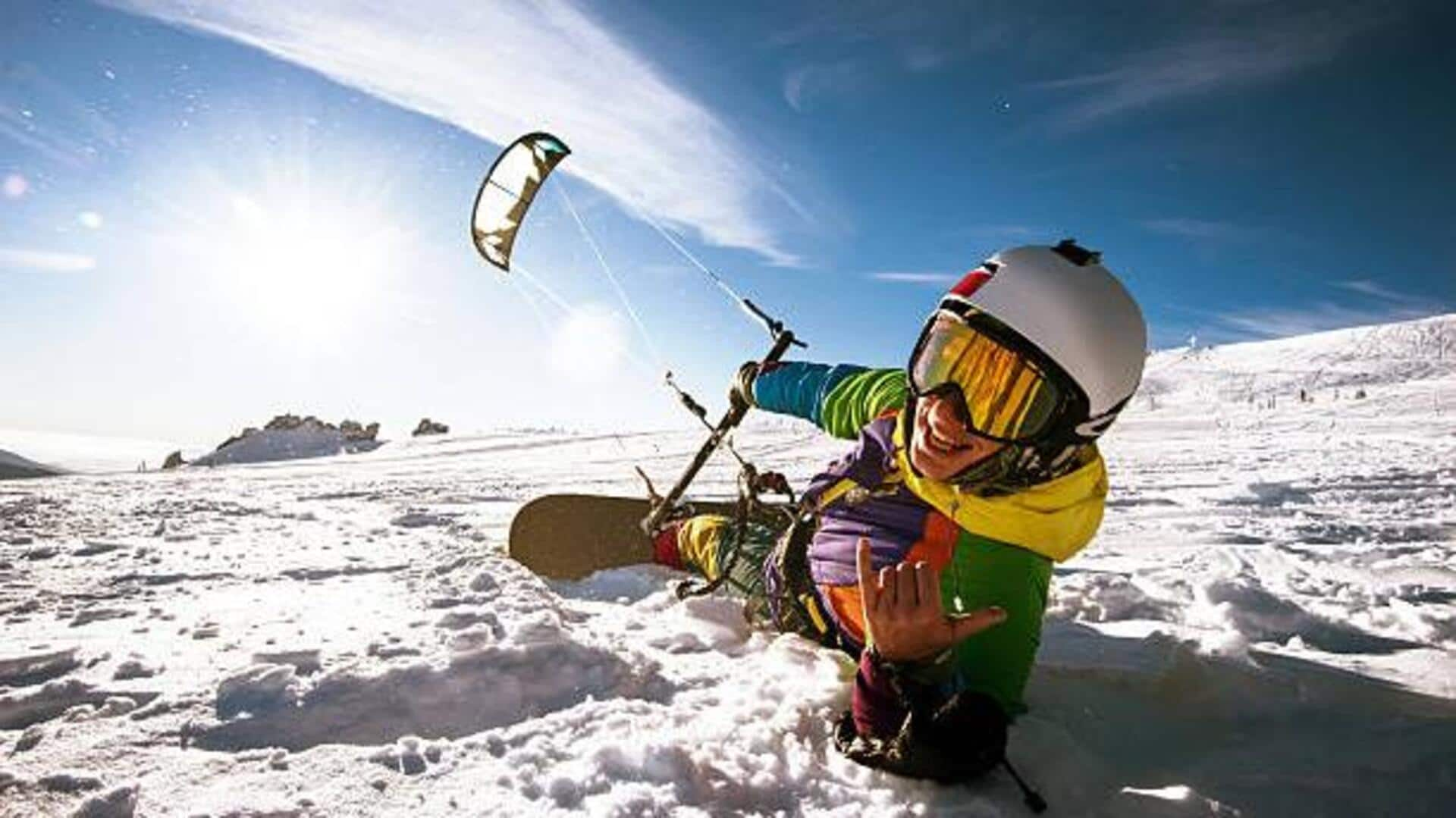
A beginner's guide to snowkiting: Gear, tips, and techniques
What's the story
Snowkiting is the ultimate winter adrenaline rush! Imagine kiteboarding meets skiing or snowboarding across a frozen lake - that's snowkiting. Wind-powered and heart-racing. It promises speed, agility, and the pure exhilaration of carving your path across vast, snow-covered landscapes. And the best part? No need for lifts or expensive gear. Just your regular winter sports equipment, a kite, and a thirst for icy adventure.
Gear selection
Choosing the right gear for snowkiting
Selecting the appropriate equipment is crucial for ensuring safety while snowkiting. The most important piece of equipment is a power kite, which can range in price from $200 to $1,500, depending on size and technology. Additional protective gear includes skis or a snowboard designed for backcountry use, helmets, goggles, and winter clothing. Novices are strongly advised to take lessons from certified instructors who can assist with gear selection.
Location hunt
Finding the perfect location
Frozen lakes offer wide-open spaces without obstructions (such as trees or buildings) that might interfere with the wind, making them perfect for snowkiting. The key here is that there should be nothing that blocks the wind. Some popular spots are Lake Dillon in Colorado and Lake Simcoe in Ontario, Canada. Just make sure to check local rules and ice safety before heading out!
Learning basics
Mastering basic techniques
Before you can perform advanced tricks, you need to master the basics of snowkiting. This means learning how to harness the kite's power to create lift and speed while balancing on your skis or snowboard. Start with a smaller kite in light winds (10-15 mph) to get a feel for steering and controlling your speed. Once you're comfortable, you can move on to stronger winds and bigger kites.
Safety first
Safety measures are paramount
The importance of safety in snowkiting cannot be emphasized enough. This sport carries inherent risks, including sudden weather changes and the potential for collisions. Always wear a helmet, ensure you have safety release systems on your kite, never kite alone, and always carry a communication device for emergencies. Checking weather forecasts before heading out is crucial to avoid getting caught in dangerous conditions like storms or extreme cold.
Community engagement
Joining snowkiting communities
Becoming a part of local or online snowkiting communities can significantly enrich your experience. You'll connect with like-minded enthusiasts, exchange tips, discover new locations, and learn crucial safety advice. Plus, these communities frequently host events, offering beginners the chance to learn from seasoned kiters in a supportive setting, and travel to new locations as a group.